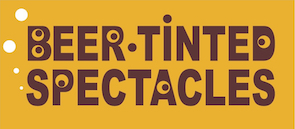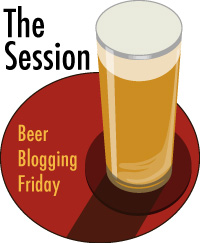It is best described as a dream? Perhaps it is, perhaps it’s just an idyll. But anyway, in this dream, I am the owner of a small, rural brewery. If it helps to picture it, it’s down a long country lane, one of those beautiful shire lanes in England with grass growing down the spine and the tarmac flaking and giving way at the sides. The vistas are long, across the water meadow (yes, they do still exist) and towards distant dark hills. There are some passing places on the road, but they’re informal: one in a field entrance where the gate hangs off its hinges; another where the gravel path to the ford scrunches down to the river, lazily. The building housing the brewery is round a sharp left hand bend. They’re farm outhouses, with ruddy-cheeked bricks, sharply mortared, with blue brick edges, smoothly curved. Roofs are clad in steep pitched Staffordshire grey tiles, bedecked in moss and chipped like a boxer’s teeth. The water for the beer bubbles up from a spring just where the hill line breaks and a copse of old mixed trees starts, some beech, some oak, hedge elm and the stickleback flashes of silver birches too.
Why a farmhouse brewery? Why artisan? I have no particular farming connection and I live in the country so there’s no pent up rural frustration, no unmet need to be ‘closer to nature’. But there is the connection of beer to its origins: being closer to the earth, the water, the fields where the crops are grown. Somehow, when the brewery is under a railway arch, or a steel clad industrial unit the connection is weakened, or worse, when it’s some industrial edifice on the outskirts of say, Manchester, that connection is lost. Here, it’s industry. Here, it’s 7 day a week brewing. Here, it’s ‘sales and operational planning’. Even the ingredients are tamed; modified malt; hops pounded and pelleted so there’s no goodness left; adjuncts for consistency and efficiency.
But the idyll is not some fantasy, not, well… idyllistic. It’s happening. As my writings have taken me further afield so my desire to reopen old, closed doors has intensified; and my willingness to experiment with wildness; with inconsistency; with tastes that make you squint has strengthened in turn.
A few years ago, I travelled through Payottenland, visited Boon, on my way in fact to Rodenbach. That was the extent of my primary research into spontaneously fermented, or oak-aged beers. I am the beginning of my new journey, of personal pioneering. Early discoveries this time round have startled me. That of Elgood’s of Wisbech, as old fashioned as they come, who have re-commissioned an old coolship so they can spontaneously ferment, installing wooden beams above it to capture microbes and build a circle of wild fermentation. This is surprising. That beers with a sour, wild, uncontained character are becoming the ‘in thing’ with urbanites is startling. And the closest thing I have found so far to my idyll, are the beers from Wild Beer Co in Somerset. They are on a farm, down a country lane. It may not be the centre of human population, but it’s Wild Yeast Central. Ironically though, I found their beers in Sourced Market at St Pancras, on a railway concourse at the heart of our most congested metropolis. Wild Beer Co talk about adding an extra element: the first water; the second, hops, the third, grains, the fourth, yeast. The fifth is wildness.
 By this point, I was already lumping around a full satchel, so only bought a couple of their brews, but what brews they turned out to be. The first was a one of their everyday drinkers, their ‘everyday sours’, to use their language. Wild Goose Chase is a ‘farmhouse pale’, brewed with their wild yeast culture and gooseberries. Gooseberries: an utterly underrated fruit anyway and yet perfect for beer; the tartness complementing the malty sweetness, the aroma incisive, cutting. It promised much and delivered – a gently ‘sour acid’ aroma (if you can have such a thing… prickly somehow); to look at, a milky gold, lively with a gentle, natural carbonation. I expected no head and it poured with none, but was not the worse for it: it was delicious, fruit, tartly quenching beer. The other was a Saison – the boldly entitled Epic Saison. Unusual for a beer that is fermented partly with bacteria, this was generously hopped (the traditional role of hops was to impede bacteria – more a problem when you are designing the bacteria in) with a dry slice of melony, passionfruity U.S. grown Sorachi Ace hops but still with that loamy European earthiness more associated with a tart beer. It would be tempting and stereotypical to describe such a beer as a ‘fusion’ – in fact, it seems quite naturally ‘of here’, like a fruit pie baked on a tin plate, plump, sharp and sweet but with that doughy, buttery taste of the fields, of dairy, of the land. My note taken at the time simply said, “Well brewed, drinkable and edgy. An irresistible combination.”
By this point, I was already lumping around a full satchel, so only bought a couple of their brews, but what brews they turned out to be. The first was a one of their everyday drinkers, their ‘everyday sours’, to use their language. Wild Goose Chase is a ‘farmhouse pale’, brewed with their wild yeast culture and gooseberries. Gooseberries: an utterly underrated fruit anyway and yet perfect for beer; the tartness complementing the malty sweetness, the aroma incisive, cutting. It promised much and delivered – a gently ‘sour acid’ aroma (if you can have such a thing… prickly somehow); to look at, a milky gold, lively with a gentle, natural carbonation. I expected no head and it poured with none, but was not the worse for it: it was delicious, fruit, tartly quenching beer. The other was a Saison – the boldly entitled Epic Saison. Unusual for a beer that is fermented partly with bacteria, this was generously hopped (the traditional role of hops was to impede bacteria – more a problem when you are designing the bacteria in) with a dry slice of melony, passionfruity U.S. grown Sorachi Ace hops but still with that loamy European earthiness more associated with a tart beer. It would be tempting and stereotypical to describe such a beer as a ‘fusion’ – in fact, it seems quite naturally ‘of here’, like a fruit pie baked on a tin plate, plump, sharp and sweet but with that doughy, buttery taste of the fields, of dairy, of the land. My note taken at the time simply said, “Well brewed, drinkable and edgy. An irresistible combination.”
These beers fuelled my desire to learn more, to taste more. To find the beers of New Belgium, Allagash or the Jolly Pumpkin; to try a ‘kettle soured’ beer, like those from The Commons. This sounds like a journey down a long, interesting country path, one with some grass growing down the middle, a farmhouse outbuilding holding a rustic brewery and wild yeasts floating through the breeze.
© David Preston, Beer Tinted Spectacles, 2015




